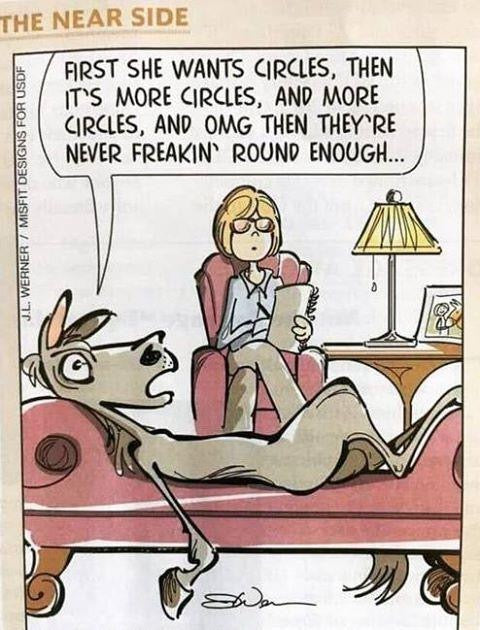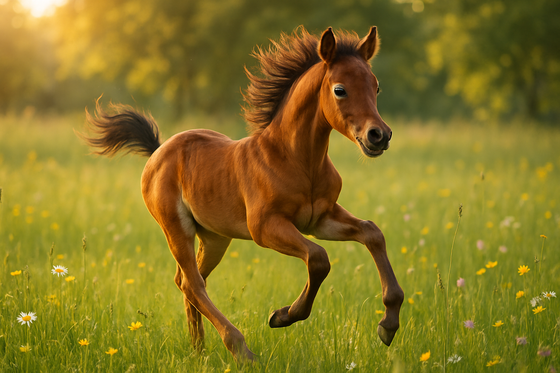
You’ve probably seen or at least can imagine the Nearside Cartoon that depicts a horse laying on a psychiatrist’s couch… lamenting…” first she wants circles, then it’s more circles, and more circles… and OMG then they’re never round enough”
A hilarious image that every barrel racer can relate to!
What’s the big deal about circles and why do they have to be so round?
Round circles are the secret exercise. Round circles are the foundation for making quick turns and fast runs. They stretch the ribcage out, so your horse is soft and flexible, able to maneuver a snappy turn and power drive.
Horses can be naturally stiff or naturally bendy. Both types, whether they are natural or learned, effect how a horse turns.
The horse’s ribcage determines the path a horse takes around the barrel and how powerful he can be. When a horse is soft in the ribcage their body will bend around the barrel and the hind legs stay directly behind the front legs for the most efficient turn. Its hind end – the power source -- will drive up underneath itself and the front end will reach forward and help pull the horse through the turn.
The goal is a level, balanced stride that encourages the horse to drive with his hind end and pull with his front end, engaging a 4-wheel drive power move. If a horse elevates or climbs, he wastes energy and shortens stride. If he drops and dumps on his front end, his hindquarters lose power, forward motion diminishes, and he is unable to be strong through the turn.
Don’t mistake that a horse is soft in the ribcage just because it is giving its nose. It’s possible that the only thing bending is its neck. If a horse is rubbery necked, the shoulders do not follow the nose and its hind end will sling out.
If a horse is stiff through its ribcage, it can be bracey and will usually either elevate or drop its front end. Either motion causes it to stall out in the turn and makes it difficult for the horse to be quick and snappy.
To soften the ribcage, walk and trot small circles and ask the horse to bend around your inside leg. Use your inside rein to pull his nose to the inside of the circle and use your inside leg right behind the front cinch to bend his ribs out. Push there until you feel the ribcage get soft.
If you have the horse’s nose but its hip feels like its kicking out from underneath you, use your outside leg in front of the back cinch to hold the hip. Use your inside leg up by the front cinch to keep the ribcage soft, their hip up underneath and the front end reaching forward. You must stay focused on their shoulders not their head.
This drill strengthens fluid, flexible, forward motion around the barrel and keeps the hindquarters engaged. That translates into Quick, snappy barrel turns; fast and efficient with powerful drive away from the barrels.
Do a few circles and when you feel fluid, forward motion, lay your outside leg on the horse, pick up on your outside rein and square your horse up and ride in a straight line for a few strides. This teaches him how to transition out of the turn and drive with equal power on both hind legs.
Now turn, go the other direction and do the same thing. More circles!
Discover, The Art of What’s Possible.
Comments will be approved before showing up.


